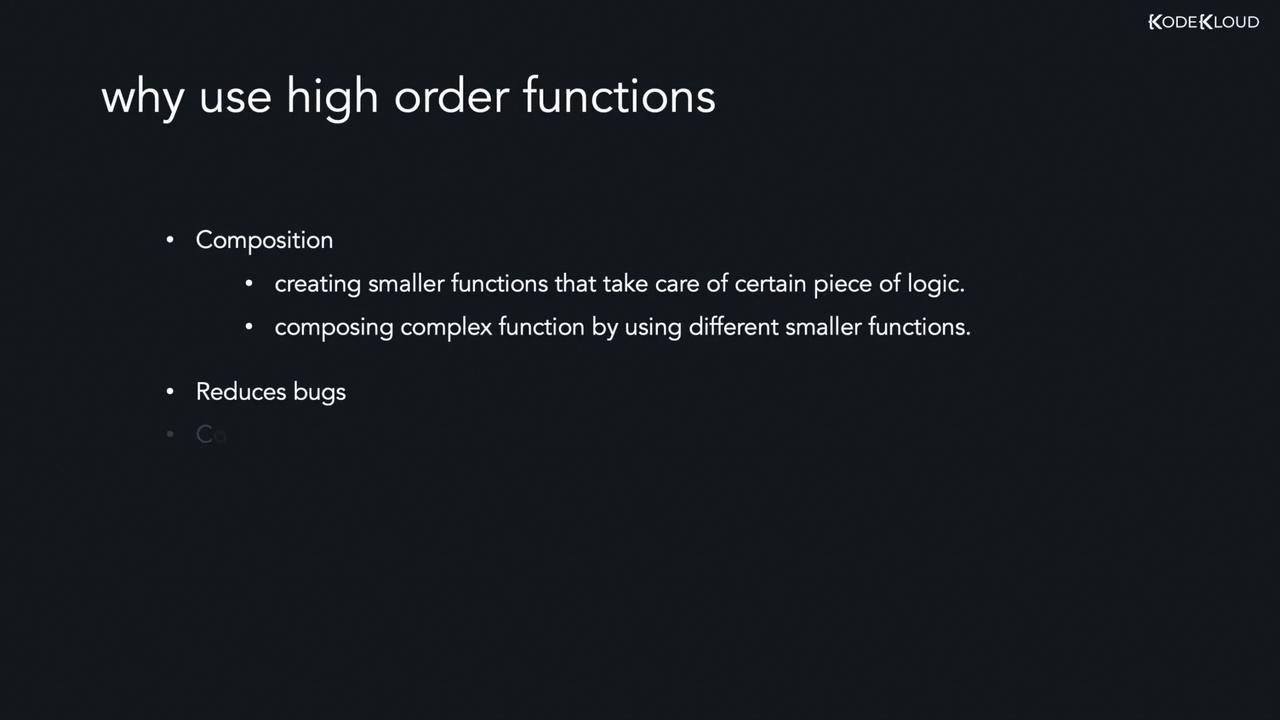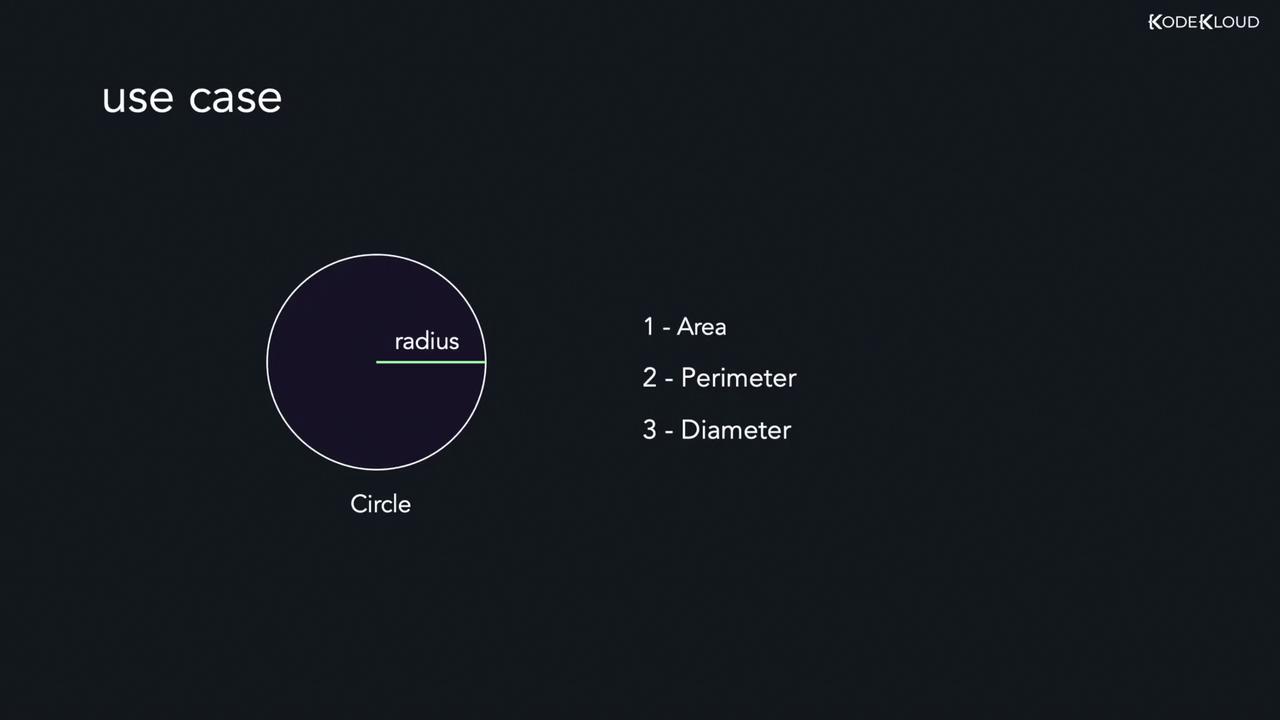Golang
Using Functions
High Order Functions
In this lesson, we explore high-order functions—functions that either accept another function as an argument or return a function as output. High-order functions enable modular composition, allowing you to build complex operations from small, focused functions. This approach not only minimizes bugs but also enhances code readability and maintainability.

Mastering high-order functions empowers you to write more efficient and maintainable code. For example, consider calculating various properties of a circle. Given a circle's radius, users might want to compute its area, perimeter, or diameter by choosing the corresponding query (1, 2, or 3).

Key Concept
High-order functions allow you to abstract recurring operations, making your code scalable as you incorporate additional properties or shapes.
Basic Circle Property Functions
Begin by defining basic functions to calculate the area, perimeter, and diameter of a circle. Each function receives the circle's radius as a float64 and returns a float64 value.
package main
import "fmt"
func calcArea(r float64) float64 {
return 3.14 * r * r
}
func calcPerimeter(r float64) float64 {
return 2 * 3.14 * r
}
func calcDiameter(r float64) float64 {
return 2 * r
}
Handling User Input with Conditional Logic
A common approach is to use conditional statements to decide which calculation to perform based on user input. The following code demonstrates this method:
func main() {
var query int
var radius float64
fmt.Print("Enter the radius of the circle: ")
fmt.Scanf("%f", &radius)
fmt.Printf("Enter \n 1 - area \n 2 - perimeter \n 3 - diameter: ")
fmt.Scanf("%d", &query)
if query == 1 {
fmt.Println("Result: ", calcArea(radius))
} else if query == 2 {
fmt.Println("Result: ", calcPerimeter(radius))
} else if query == 3 {
fmt.Println("Result: ", calcDiameter(radius))
} else {
fmt.Println("Invalid query")
}
}
When running this program, the console interaction might look like:
>>> go run main.go
Enter the radius of the circle: 9.1
Enter
1 - area
2 - perimeter
3 - diameter: 1
Result: 260.0234
Thank you!
While this solution works, it can quickly become cumbersome as you add more shape properties. Leveraging high-order functions simplifies the code and enhances scalability.
Simplifying with High-Order Functions
The following sections demonstrate how to refactor the code using high-order functions. We introduce two helper functions: one to display the result and another to map the query number to the appropriate calculation function.
Defining the printResult Function
The printResult function accepts the radius and a calculation function as parameters. It executes the calculation, stores the result, and displays it.
func printResult(radius float64, calcFunction func(r float64) float64) {
result := calcFunction(radius)
fmt.Println("Result: ", result)
fmt.Println("Thank you!")
}
Defining the getFunction Function
The getFunction function maps a user's query (an integer) to the corresponding calculation function using a predefined map.
func getFunction(query int) func(r float64) float64 {
queryToFunc := map[int]func(r float64) float64{
1: calcArea,
2: calcPerimeter,
3: calcDiameter,
}
return queryToFunc[query]
}
Refactored Main Function Using High-Order Functions
By integrating these high-order functions, the main function becomes succinct. It reads user input, selects the appropriate calculation function via getFunction, and passes it to printResult.
func main() {
var query int
var radius float64
fmt.Print("Enter the radius of the circle: ")
fmt.Scanf("%f", &radius)
fmt.Printf("Enter \n 1 - area \n 2 - perimeter \n 3 - diameter: ")
fmt.Scanf("%d", &query)
printResult(radius, getFunction(query))
}
Upon running the refactored program, you may observe the following console interaction:
>>> go run main.go
Enter the radius of the circle: 7
Enter
1 - area
2 - perimeter
3 - diameter: 3
Result: 14
Thank you!
Benefits of High-Order Functions
High-order functions reduce code redundancy while clarifying the logical separation between input handling and processing logic—making it easier to extend and maintain your application.
By adopting high-order functions, you enhance code clarity, modularity, and scalability. Try integrating these concepts into your projects to unlock more robust and maintainable code designs.
Watch Video
Watch video content
Practice Lab
Practice lab